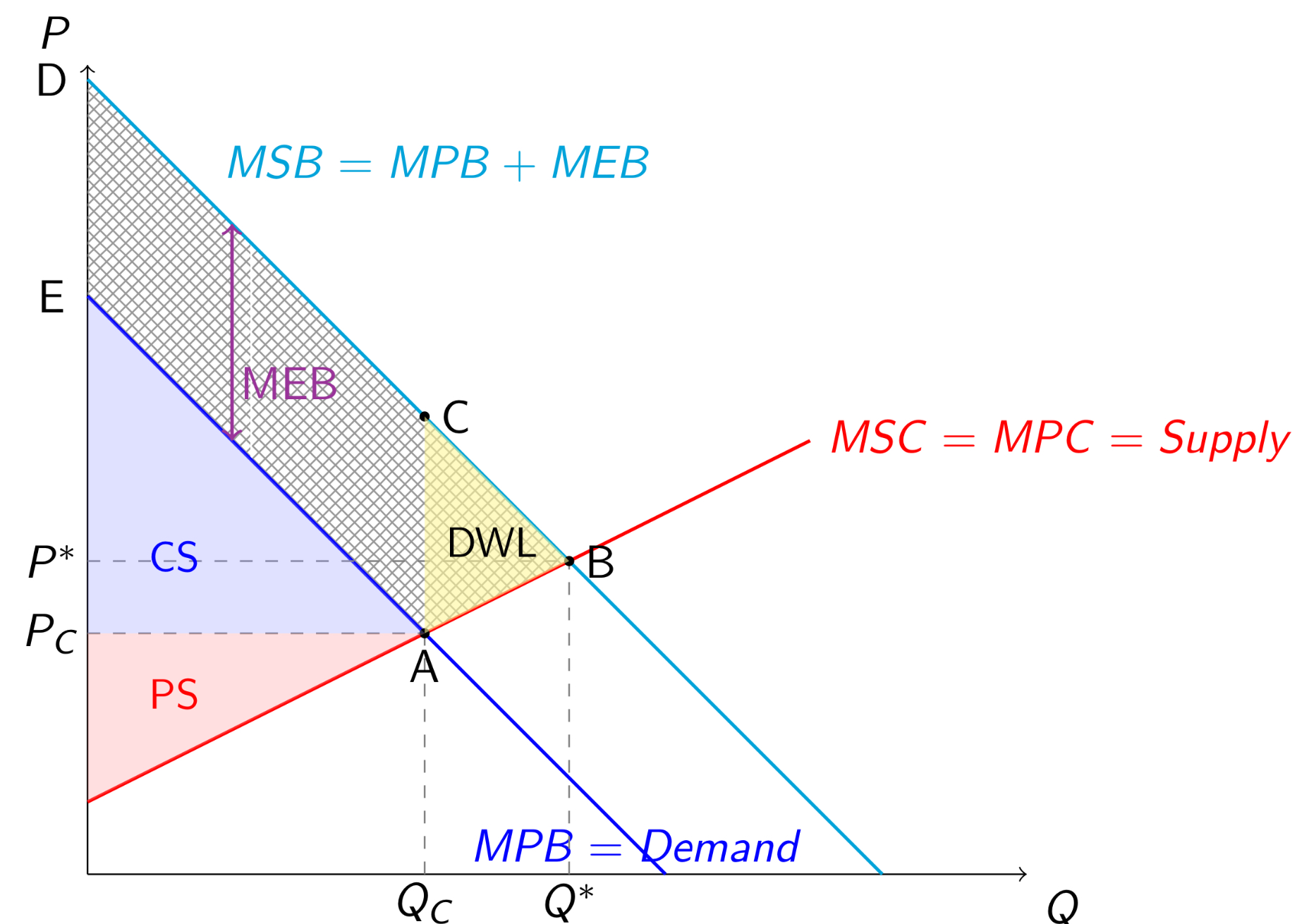Topic 6: Market Failures and Externalities
1/21
There's no tags or description
Looks like no tags are added yet.
Name | Mastery | Learn | Test | Matching | Spaced |
|---|
No study sessions yet.
22 Terms
What do we mean by externalities?
=when our choices directly affect the well-being of others not involved in the transaction
Markets and externalities: how do these go together?
Competitive markets may allocate resources inefficiently (because MSB differs from MSC)
What two types of externalities are there?
Positive externalities —> under-production
Negative externalities —> over-production
Positive externality (in consumption)

Pigouvian subsidy s = MEB

Negative externality (in production)

Pigouvian tax t = MEC

What is private parties’ role in this?
They have strong incentives to identify inefficiencies and negotiate mutually beneficial solutions
What can happen when the private sector fails to address externalities?
Government policies can potentially improve economic efficiency
What do we mean by ‘external cost’?
=the economic harm that a negative externality imposes on others
What do we mean by ‘external benefit’?
=the economic gain that a positive externality provides to others
Examples of negative externalities in production
A farmer spraying weedkiller that destroys his neighbour’s crop
Water, soil, and a air pollution
Carbon emissions and global warming
Inefficiency in competitive markets
Marginal Social Cost (MSC) = Marginal Cost (MC) + Marginal External Cost (MEC) —> Pollution
Marginal Social Benefit (MSB)= Marginal Benefit (MB) + Marginal External Benefit (MEB) —> Vaccines
When an externality is present…
private costs and/or benefits of an activity to the party who performs it differ from the social costs and/or benefits of that activity
How is an efficient outcome reached with externalities?
When MSC = MSB
Remedies for externalities: the public sector
Governments can remedy some externalities through policies that help the private sector create the necessary markets, for example:
by creating and operating those markets
by regulating the level of activities
by correcting private incentives through taxes, fees, subsidies or liability rules
In sum: for categories of governmental remedies for externalities
Policies that support the market
Quantity controls
Taxes, fees, subsidies
Liability rules
Policies that support markets —> to improve economic efficiency
Sometimes, governments can address externalities by helping the private sector create the necessary markets:
establish clear property rights
pass laws protecting property rights
enforce contracts
even creating and operating a market (e.g. ETS)
Quantity controls
E.g. the Emissions standard: a legal limit on the amount of pollution that a person or company can produce when engaged in a particular activity
Taxes, fees, and subsidies
Pigouvian taxation: the use of taxes/fees to remedy negative externalities
Pigouvian subsidisation: the use of subsidies to remedy positive externalities
Liability rules
These rules make the polluter financially responsible for the harm caused by others —> a way of internalising externalities when damages can easily be identified and assigned

Consequences of policy errors
Government information and choices are frequently imperfect —> Errors in setting a tax and a standard may have different implications: depending on the slopes of the curves, we might have greater/smaller DWL